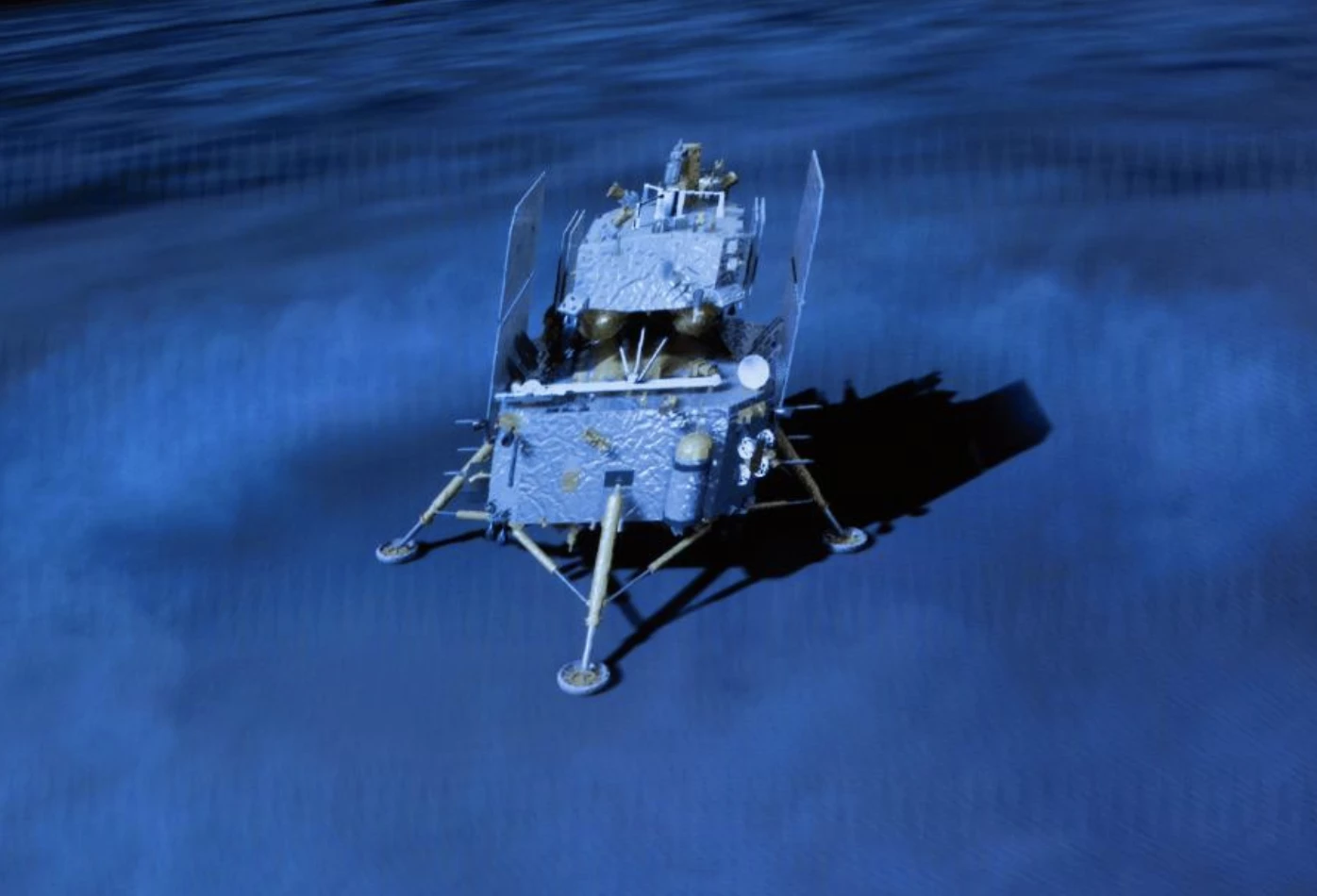China's uncrewed Chang'e-6 has successfully landed on the far side of the Moon, where it will use its robotic arm and drill to gather lunar rock and soil samples from the unexplored region for the first time in history. On-board cameras caught the moment it made contact with the Moon's surface.
With help from the Queqiao-2 relay satellite, Chang'e-6 landed in the South Pole-Aitken (SPA) Basin Sunday morning Beijing time (22:23 GMT Saturday), according to the China National Space Administration (CNSA).
CNSA seemed lost for words over the historic landing, issuing this short-but-sweet press release: "The Chang'e-6 lander-ascender combination made a soft landing on Sunday on the moon's mysterious far side. It's another crucial milestone for the mission – the first of its kind. The probe was launched on May 3 and entered lunar orbit on May 8. The landing went smoothly, as planned."
According to the China Aerospace Science and Technology Corporation (CASC), Apollo Basin was picked for touchdown because it offered a rare flat area to land on the the rugged side of the Moon.
The probe will now gather 2 kg (4.4 lb) of material from around its landing site over several days, using a robotic arm for surface sampling and a drill for subsurface soils. It'll then meet another spacecraft in lunar orbit to return to Earth, with a touchdown in the Inner Mongolia region expected around June 25.
It's China's second trip to the Moon, following a mission in 2019 that saw Chang'e-5 land on the more familiar near side.
Chang'e-6 "hovered 100 meters above the safe point, and used laser 3D scanning to take precise photos to detect lunar obstacles," according to another CNSA statement. "Finally, the landing point was selected and began to descend vertically at a slow speed. When it was about to reach the lunar surface, the engine was shut down, and the buffer system was used to ensure that the combination reached the lunar surface in a free fall manner, and finally landed smoothly in the South Pole-Aitken Basin on the back of the moon."
Source: CNSA





